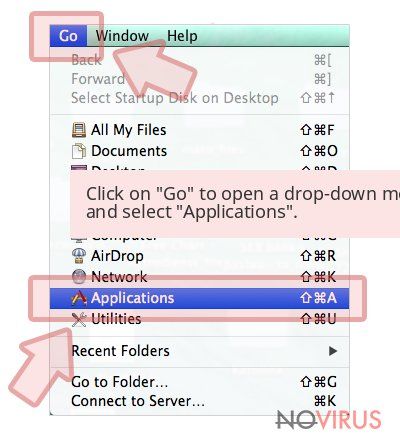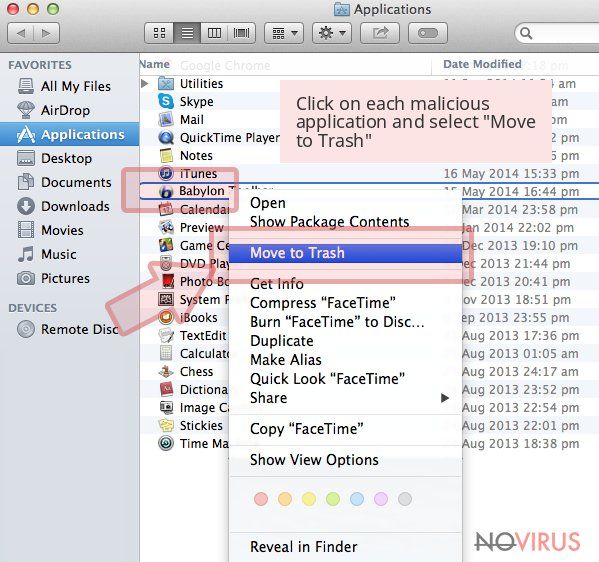Uninstall Provider ads (Free Removal Guide)
Provider ads Removal Guide
Description of Provider Ads
Where did Provider Ads come from?
If Provider ads are flooding your browser, it means that your computer is infected with an adware-type program. This adware can affect Google Chrome, Internet Explorer, and Mozilla Firefox web browsers. Once web browser is infected, user starts receiving various advertisements that are displayed on every website that he or she tries to visit. These ads are incredibly annoying because they can cover the entire browser’s window. Besides, no matter that they show you the X button which is supposed to close these ads, clicking it usually redirects you to sponsored website. Indeed, Provider virus can cause lots of inconveniences and may decrease browsing quality. However, the biggest problem is that these ads might lead you to malicious websites that can infect your computer with malware or other viruses. Keep in mind that adware programs are created for generating revenue from affiliate marketing. So, their developers are interested in redirecting people to sponsored websites and collecting pay-per-click revenue. They do not care or take responsibility for third-party content, so, if you want to avoid potential threats caused by an excessive amount of ads, you should remove Provider virus from your computer. For elimination, we recommend using FortectIntego. Run a full system scan with this anti-malware tool and wait for its scan results. Then, you can either remove them manually or let this program take care of them automatically. Adware programs are capable of installing additional apps, so you should not delay its removal.
Advertisements caused by Provider adware usually are named as ‘Ads by [adware name].’ If you happen to see this or similar name, stay away from these ads because they can’t help you save the money. The most of these notifications are displayed in a form of banners, pop-ups, in-text ads and other types of online ads. As we mentioned earlier, these advertisements are a potential threat to your computer. Indeed, you can try to avoid them, but you cannot escape unwanted and unexpected redirects. The problem with Provider redirect is that users can end up on questionable websites. Some of these Internet sites might be created for spreading malware. Provider removal is the only option to avoid unexpected visits to high-risk Internet sites. Unfortunately, this potentially unwanted program might track users’ data too. Indeed, the creators of adware have to learn about users in order to deliver attractive and interest-based ads. Individualised advertisements might encourage users to click on them more often. Every click is worth some money and developers aggressively seek for financial fulfilment.
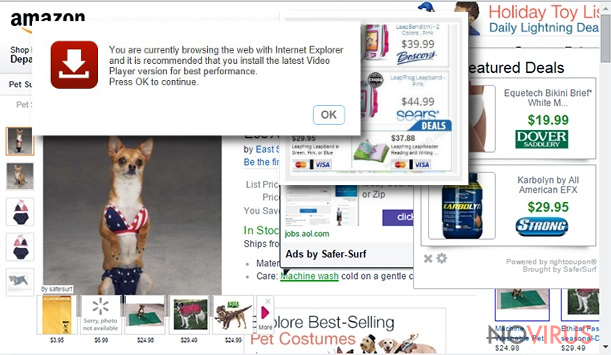
How can adware infiltrate computers?
Adware, which is responsible for unwanted Provider Ads, travels bundled with free programs that users install from the Internet or using file-sharing services. For software downloads, you should always choose reliable domains. You should know that safe downloads and updates are always provided in developers’ websites. However, you have to make sure that the creators of the program are reliable by reading the Privacy Policy, EULA or other official documents. Reading the documents is not enough. You have to monitor software installation process by choosing ‘Custom’ or ‘Advanced’ installation mode. This method allows seeing and adjusting optional downloads. The latter step allows preventing Provider Ads hijack too. Unfortunately, many computer users agree to install the program using ‘Basic’ or ‘Quick’ installation settings. Bear in mind that software installers do not adequately disclose about additional or optional programs. So, using recommended installation mode users risk installing potentially unwanted programs.
Provider Ads removal guide
Provider removal consists of two steps. First of all, you have to find and remove adware which is responsible for delivering annoying ads. Secondly, you have to eliminate all suspicious browser extensions or plugins that might have been installed and reset browser’s settings. At the end of the article, you will find detailed instructions how to eliminate this computer infection manually. However, you can dedicate this task for anti-malware tools and remove Provider Ads automatically. Both methods are effective; however, the latter is better if you value your time and want to spend your free-time doing more pleasant activities.
You may remove virus damage with a help of FortectIntego. SpyHunter 5Combo Cleaner and Malwarebytes are recommended to detect potentially unwanted programs and viruses with all their files and registry entries that are related to them.
Getting rid of Provider ads. Follow these steps
Uninstall Provider in Windows systems
Try to remember the latest programs that you downloaded from the Internet. Some of them might be responsible for an adware which delivers Provider Ads. You have to find and delete it.
Terminate suspicious programs from Windows 10/8 machines by following these instructions:
- Type Control Panel into Windows search and once the result shows up hit Enter.
- Under Programs, choose Uninstall a program.
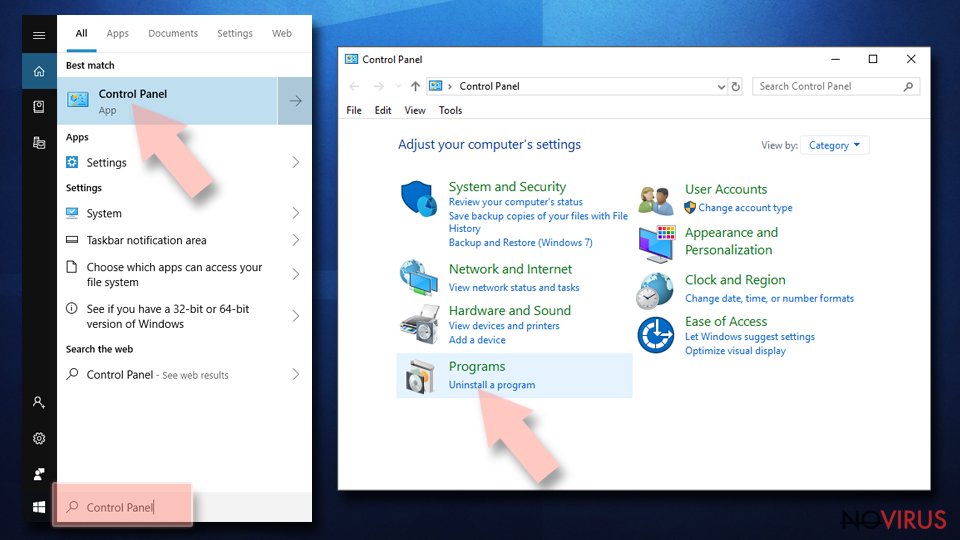
- Find components related to suspicious programs.
- Right-click on the application and select Uninstall.
- Click Yes when User Account Control shows up.
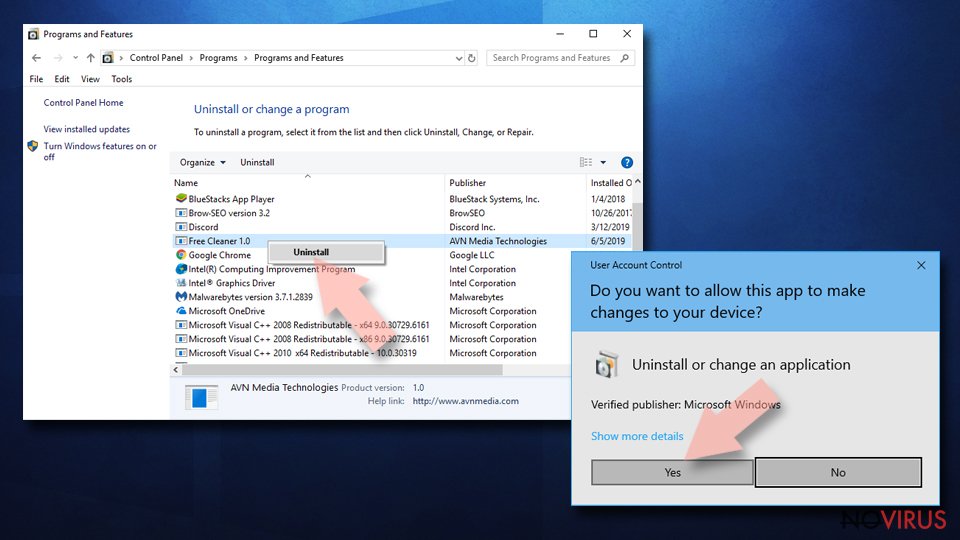
- Wait for the process of uninstallation to be done and click OK.
Windows 7/XP instructions:
- Click on Windows Start and go to Control Panel on the right pane.
- Choose Add/Remove Programs.
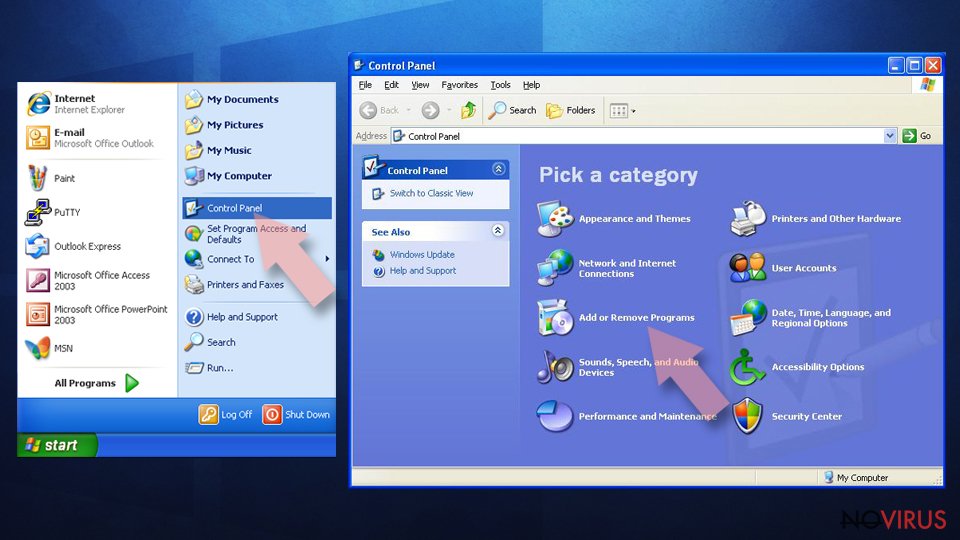
- Select Uninstall a program under Programs in Control Panel.
- Click once on the unwanted application.
- Click Uninstall/Change at the top.
- Confirm with Yes.
- Click OK and finish the removal.
Uninstall Provider in Mac OS X system
Probably, you have recently installed a program which let an adware sneak inside your computer. Now you have to find that program and remove it, as well as other suspicious programs that might have been installed into the system.
-
Users who use OS X should click on Go button, which can be found at the top left corner of the screen and select Applications.

-
Wait until you see Applications folder and look for Provider or any other suspicious programs on it. Now right click on every of such entries and select Move to Trash.

Delete Provider ads from Microsoft Edge browser
Unwanted advertisements should disappear if you clear all browsing data.
Delete suspicious extensions from MS Edge:
- Go to the Menu by clicking on the three horizontal dots at the top-right.
- Then pick Extensions.
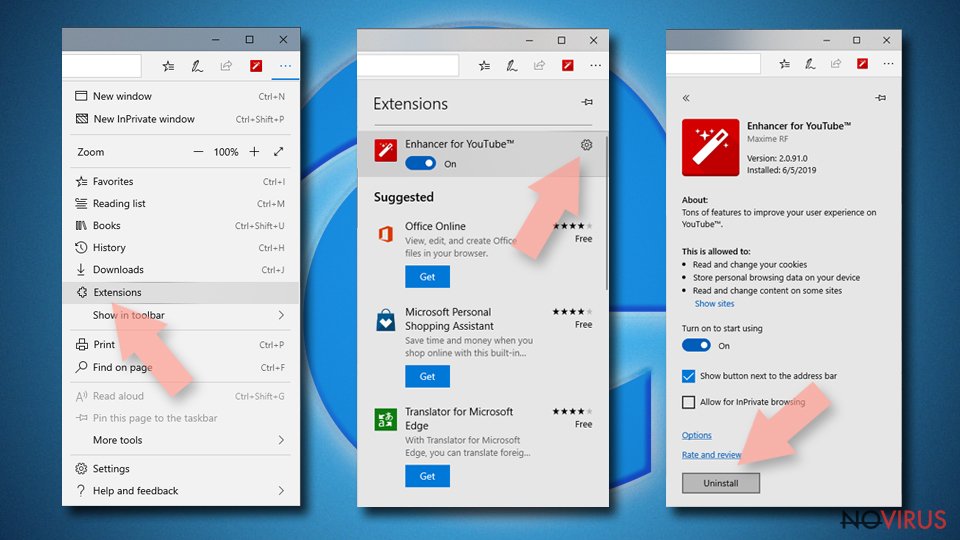
- Choose the unwanted add-ons on the list and click on the Gear icon.
- Click on Uninstall at the bottom.
Clear cookies and other data:
- Click on the Menu and from the context menu select Privacy & security.
- Under Clear browsing data, select Choose what to clear.
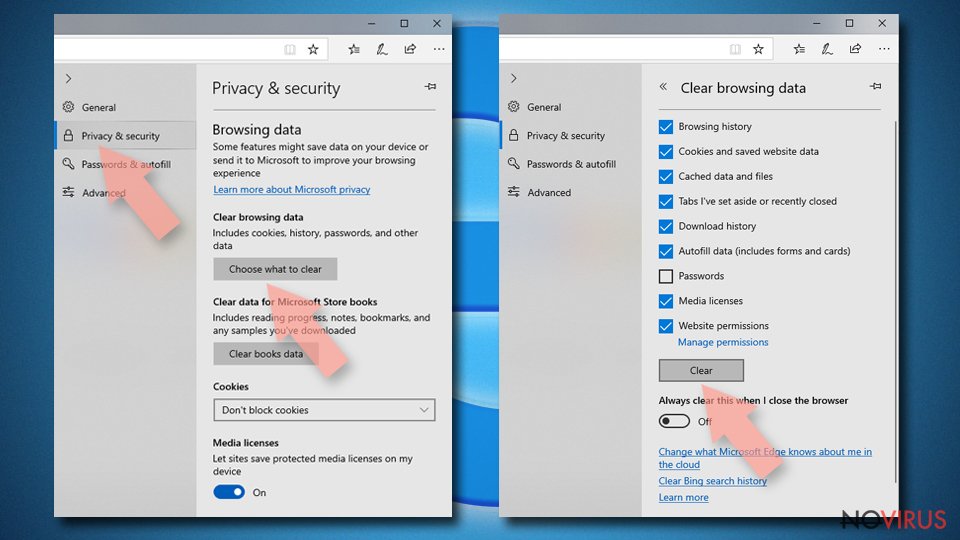
- Choose everything except passwords, and click on Clear.
Alter new tab and homepage settings:
- Click the menu icon and choose Settings.
- Then find On startup section.
- Click Disable if you found any suspicious domain.
Reset MS Edge fully:
- Click on the keyboard Ctrl + Shift + Esc to open Task Manager.
- Choose More details arrow at the bottom.
- Go to Details tab.
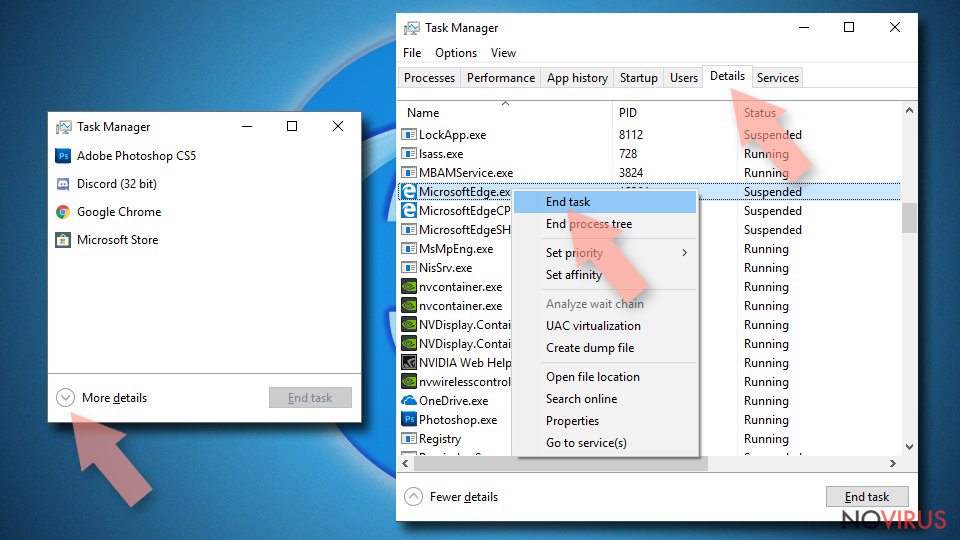
- Now scroll down and locate every entry with Microsoft Edge name in it.
- Right-click on each of them and select End Task to stop MS Edge from running.
When none of the above solves the issue, you might need an advanced Edge reset method, but you need to backup your data before proceeding.
- Find the following folder on the PC: C:\\Users\\%username%\\AppData\\Local\\Packages\\Microsoft.MicrosoftEdge_8wekyb3d8bbwe.
- Press Ctrl + A on your keyboard to select all folders.
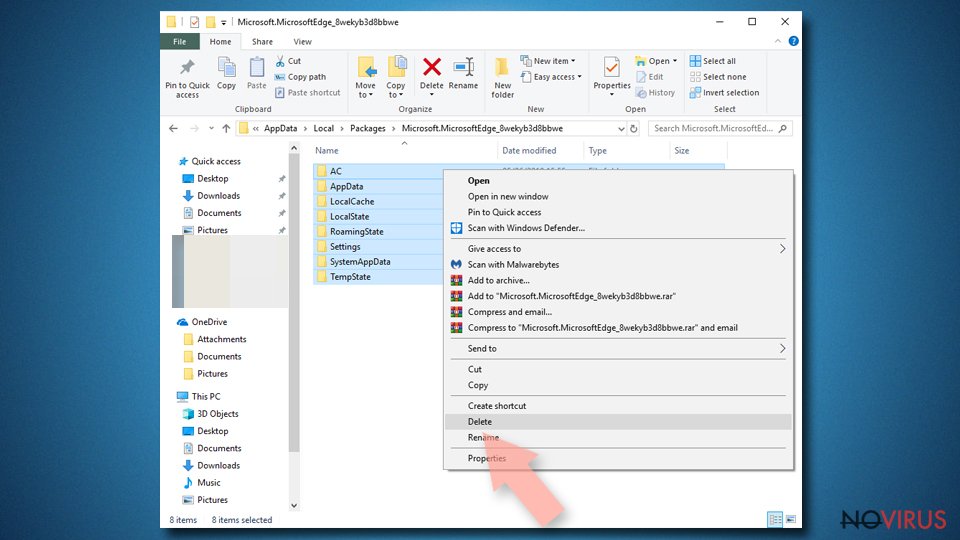
- Right-click on the selection and choose Delete
- Right-click on the Start button and pick Windows PowerShell (Admin).
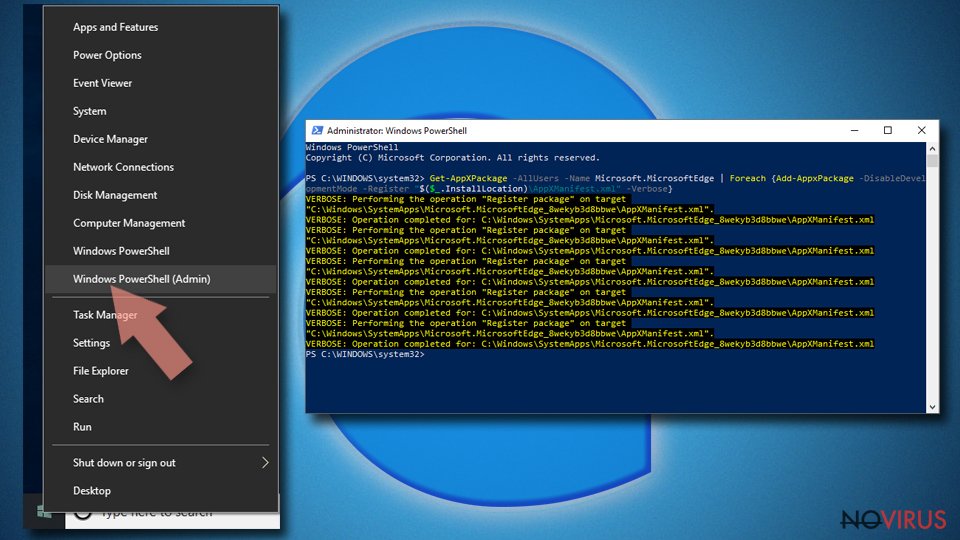
- Copy and paste the following command, and then press Enter:
Get-AppXPackage -AllUsers -Name Microsoft.MicrosoftEdge | Foreach {Add-AppxPackage -DisableDevelopmentMode -Register “$($_.InstallLocation)\\AppXManifest.xml” -Verbose
Instructions for Chromium-based Edge
Delete extensions:
- Open Edge and click Settings.
- Then find Extensions.
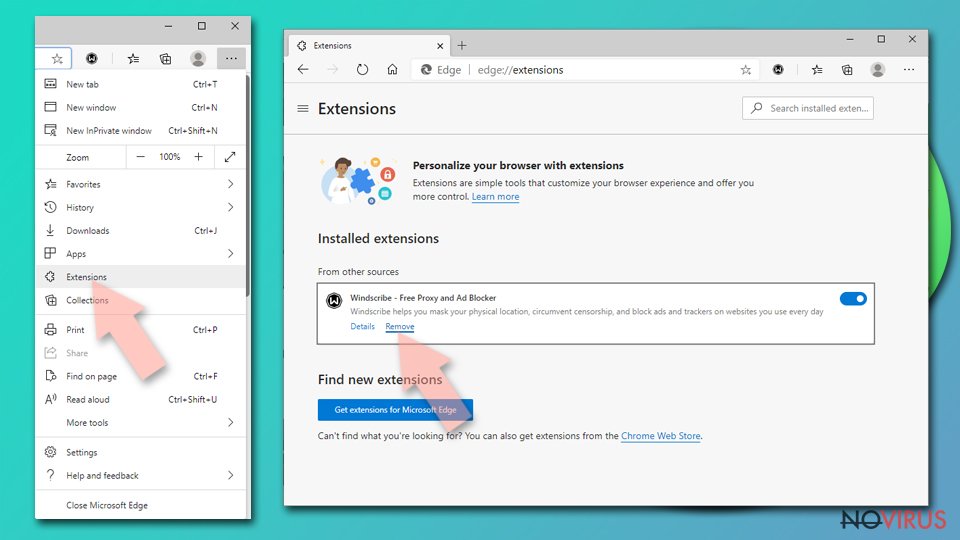
- Delete unwanted extensions with the Remove.
Clear cache and site data:
- Click on Menu and then Settings.
- Find Privacy and services.
- Locate Clear browsing data, then click Choose what to clear.
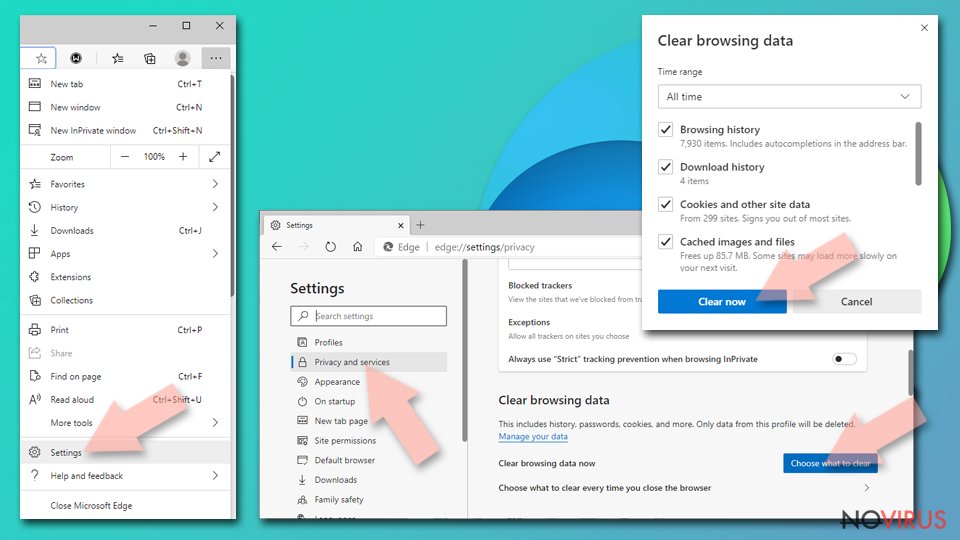
- Time range.
- Click All time.
- Select Clear now.
Reset Chromium-based MS Edge browser fully:
- Go to Settings.
- On the left side, choose Reset settings.
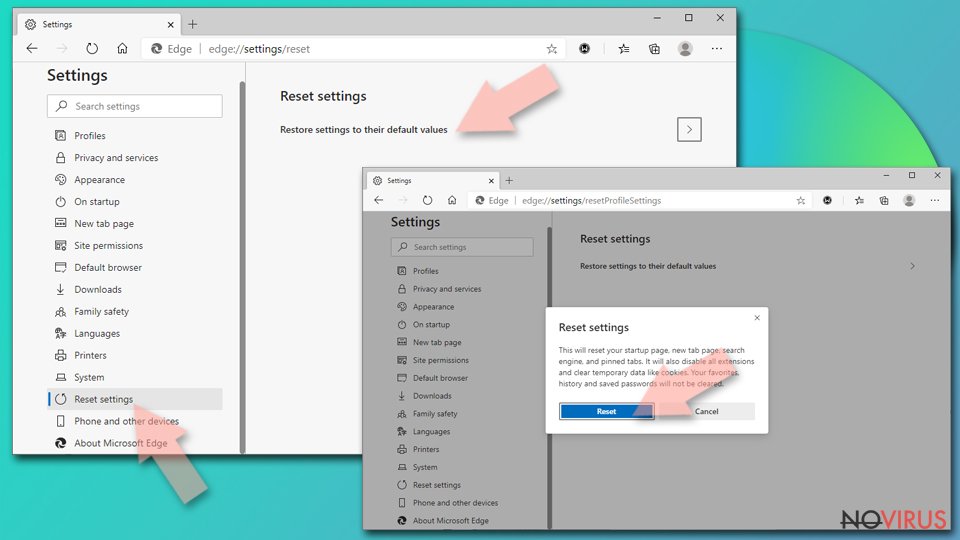
- Select Restore settings to their default values.
- Click Reset.
Delete Provider from Mozilla Firefox (FF)
In Mozilla Firefox might be installed suspicious add-ons. So, you have to check the list and remove all questionable apps.
Remove suspicious Firefox extensions:
- Open Mozilla Firefox browser and click on the three horizontal lines at the top-right to open the menu.
- Select Add-ons in the context menu.
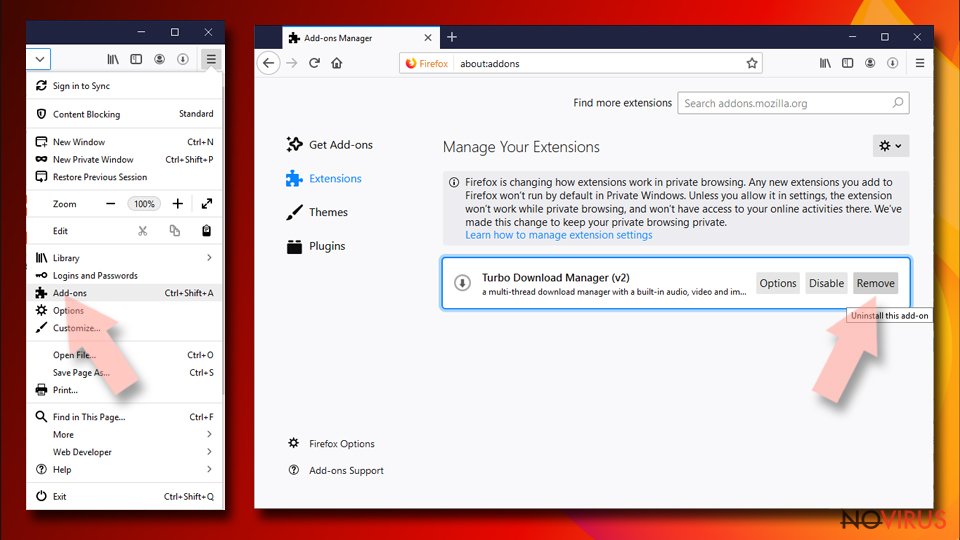
- Choose plugins that are creating issues and select Remove.
Reset the homepage on the browser:
- Click three horizontal lines at the top right corner.
- This time select Options.
- Under Home section, enter your preferred site for the homepage that will open every time you launch Mozilla Firefox.
Clear cookies and site data:
- Click Menu and pick Options.
- Find the Privacy & Security section.
- Scroll down to choose Cookies and Site Data.
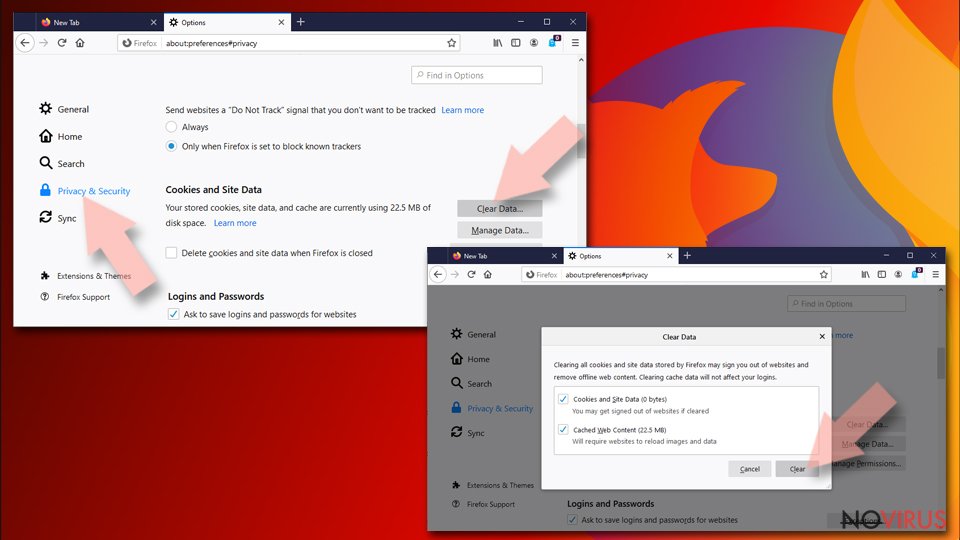
- Click on Clear Data… option.
- Click Cookies and Site Data, Cached Web Content and press Clear.
Reset Mozilla Firefox:
If none of the steps above helped you, reset Mozilla Firefox as follows:
- Open Mozilla Firefox and go to the menu.
- Click Help and then choose Troubleshooting Information.
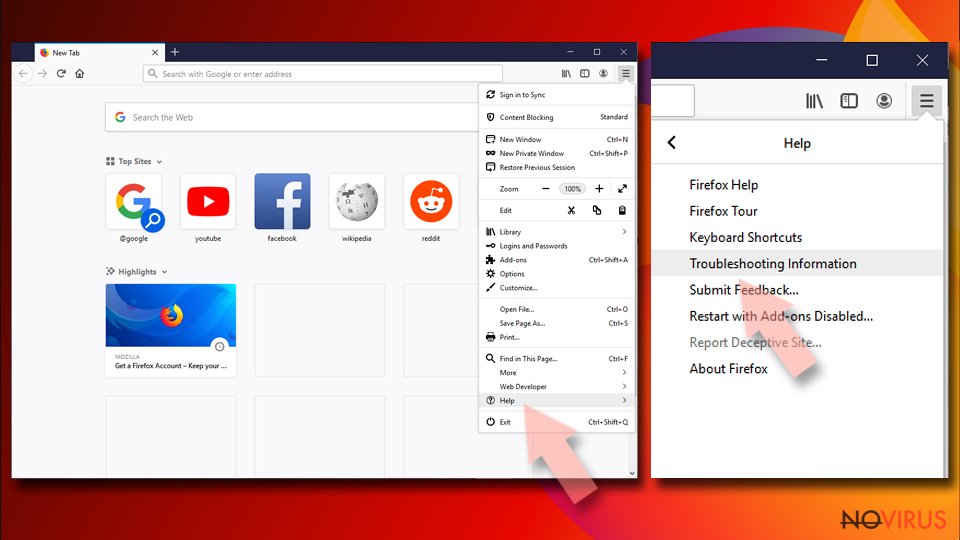
- Locate Give Firefox a tune-up section, click on Refresh Firefox…
- Confirm the action by pressing on Refresh Firefox on the pop-up.
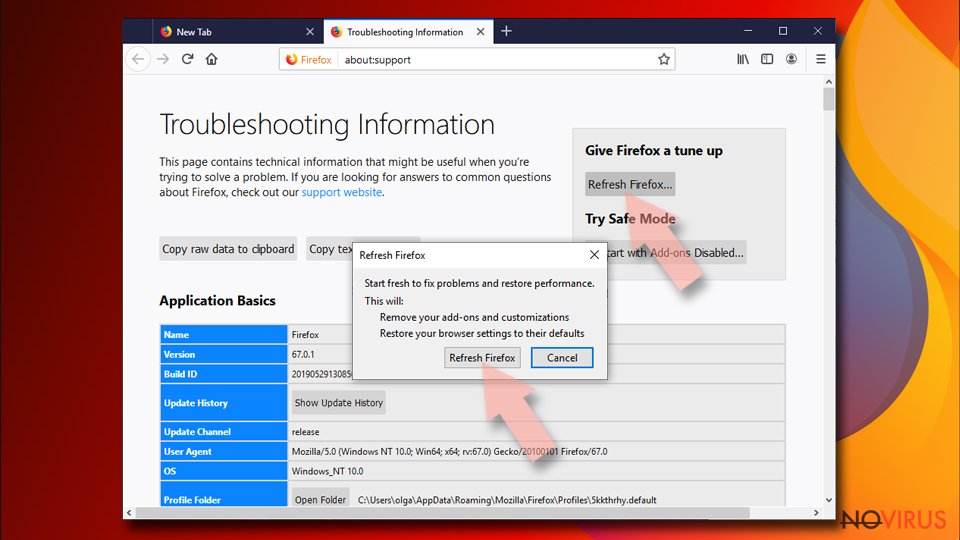
Chrome browser reset
Check the list of browser extensions. if you find some suspicious tools or plugins, delete them immediately.
Find and remove suspicious extensions from Google Chrome:
- In Google Chrome, open the Menu by clicking three vertical dots at the top-right corner.
- Select More tools > Extensions.
- Once the window opens, you will see all the installed extensions.
- Find any suspicious add-ons related to any PUP.
- Uninstall them by clicking Remove.
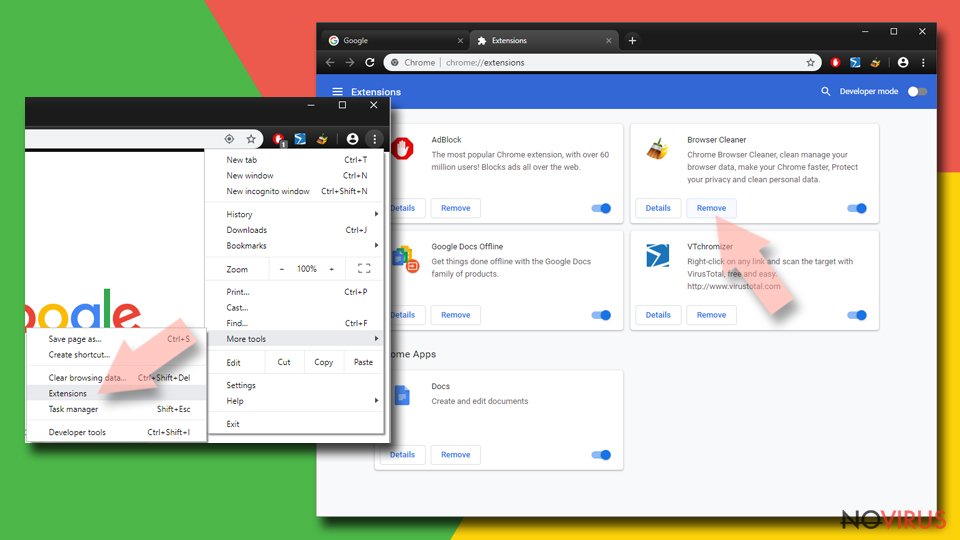
Clear cache and web data from Chrome:
- Click the Menu and select Settings.
- Find Privacy and security section.
- Choose Clear browsing data.
- Select Browsing history.
- Cookies and other site data, also Cached images and files.
- Click Clear data.
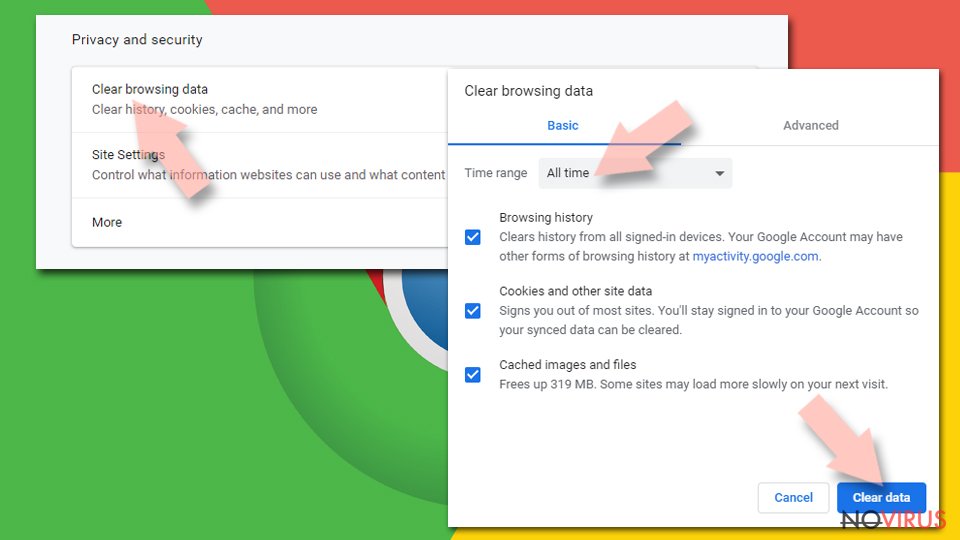
Alter settings of the homepage:
- Go to the menu and choose Settings.
- Find odd entries in the On startup section.
- Click on Open a specific or set of pages.
- Then click on three dots and look for the Remove option.
Reset Google Chrome fully:
You might need to reset Google Chrome and properly eliminate all the unwanted components:
- Go to Chrome Settings.
- Once there, scroll down to expand Advanced section.
- Scroll down to choose Reset and clean up.
- Click Restore settings to their original defaults.
- Click Reset settings again.

Delete Provider from Safari
Look through ‘Extensions’ list and uninstall all suspicious apps.
Get rid of questionable extensions from Safari:
- Click Safari.
- Then go to Preferences…
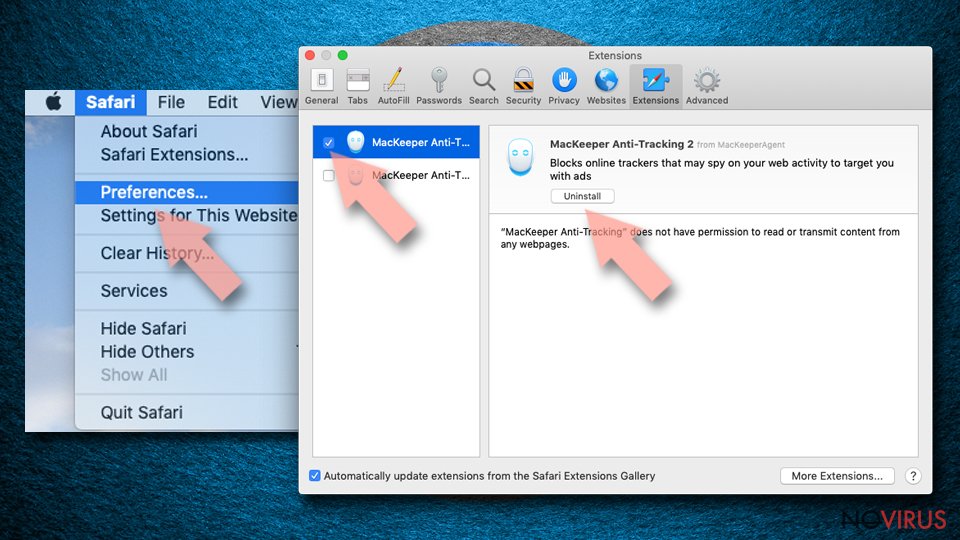
- Choose Extensions on the menu.
- Select the unwanted extension and then pick Uninstall.
Clear cookies from Safari:
- Click Safari.
- Choose Clear History…
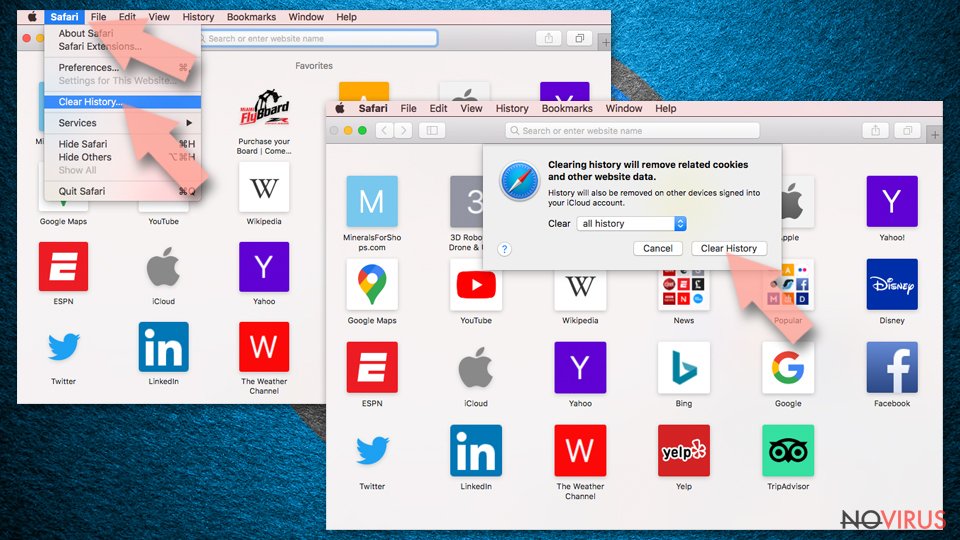
- From the drop-down menu under Clear, find and pick all history.
- Confirm with Clear History.
Reset Safari fully:
- Click Safari and then Preferences…
- Choose the Advanced tab.
- Tick the Show Develop menu in the menu bar.
- From the menu bar, click Develop.
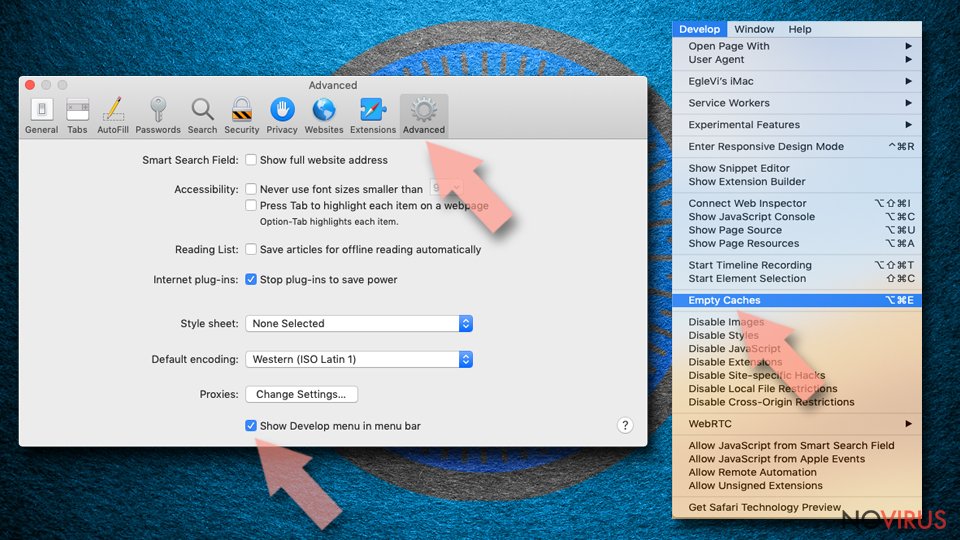
- Then select Empty Caches.
Even if you have completed all the steps above, we still strongly recommend you to scan your computer system with a powerful anti-malware software. It is advisable to do that because an automatic malware removal tool can detect and delete all remains of Provider, for instance, its registry keys. The anti-malware program can help you to easily detect and eliminate possibly dangerous software and malicious viruses in an easy way. You can use any of our top-rated malware removal programs: FortectIntego, SpyHunter 5Combo Cleaner or Malwarebytes.
How to prevent from getting adware
Prevent the government from spying on you
As there is a growing debate in government about collecting users' data and spying on citizens, you should take a closer look at this issue and find out what shady ways of gathering information can be used to collect information about you. You need to browse anonymously if you want to avoid any government-initiated spying and tracking of information.
You can enjoy secure internet browsing and minimize the risk of intrusion into your system if you use Private Internet Access VPN program. This VPN application creates a virtual private network and provides access to the required data without any content restrictions.
Control government and other third party access to your data and ensure safe web browsing. Even if you do not engage in illegal activities and trust your ISP, we recommend being careful about your security. You should take extra precautions and start using a VPN program.
Recover files damaged by a dangerous malware attack
Despite the fact that there are various circumstances that can cause data to be lost on a system, including accidental deletion, the most common reason people lose photos, documents, videos, and other important data is the infection of malware.
Some malicious programs can delete files and prevent the software from running smoothly. However, there is a greater threat from the dangerous viruses that can encrypt documents, system files, and images. Ransomware-type viruses focus on encrypting data and restricting users’ access to files, so you can permanently lose personal data when you download such a virus to your computer.
The ability to unlock encrypted files is very limited, but some programs have a data recovery feature. In some cases, the Data Recovery Pro program can help recover at least some of the data that has been locked by a virus or other cyber infection.
